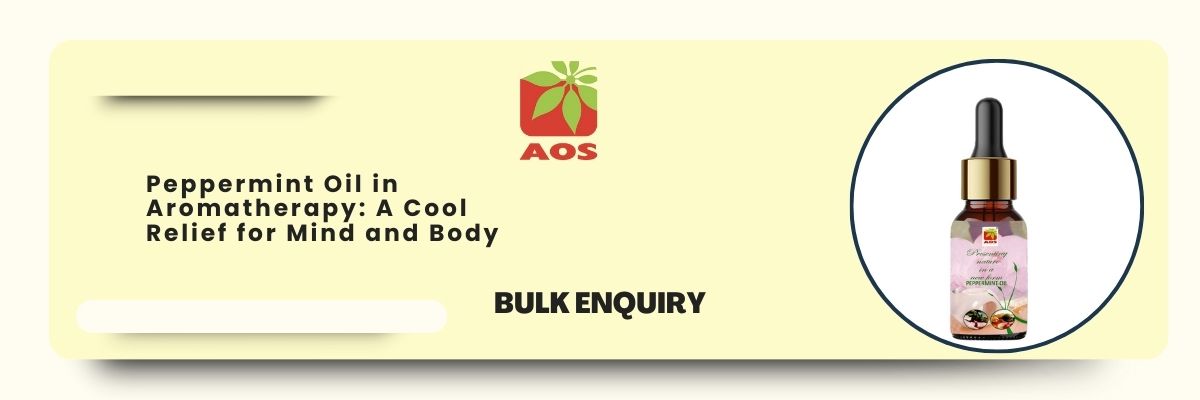

Aromatherapy, the practice of using essential oils to promote physical and emotional well-being, has gained widespread popularity as a natural healing method. Among the most powerful and versatile oils used in this practice is peppermint oil — a cooling, invigorating essence derived from the Mentha × piperita plant. Known for its crisp, refreshing aroma and wide range of therapeutic properties, peppermint oil is a staple in both home and professional Peppermint Oil in Aromatherapy settings.
Peppermint oil is an essential oil extracted through steam distillation of the peppermint plant’s leaves. Its main active compounds — menthol and menthone — give it a strong, minty scent and potent effects on the body and mind. Unlike spearmint, peppermint contains a higher concentration of menthol, making it more intense and effective for specific therapeutic applications.
Peppermint Oil in Aromatherapy
Peppermint oil is a powerful and versatile essential oil extracted from the peppermint plant (Mentha × piperita). With its high menthol content and refreshing scent, it is widely used across wellness, beauty, healthcare, and home care. Below are the most popular and practical uses of peppermint oil:
1. Boosting Mental Focus & Energy
Aromatherapy: Diffuse or inhale peppermint oil to increase alertness, focus, and mental clarity.
Study Aid: Use in a diffuser or apply (diluted) on temples during studying or work to combat fatigue.
2. Relieving Headaches & Migraines
Topical Use: Apply diluted peppermint oil to the temples, forehead, or back of the neck to relieve tension headaches.
Inhalation: Inhale directly or use in a diffuser to help ease migraine symptoms.
3. Supporting Respiratory Health
Steam Inhalation: Add a few drops to hot water and inhale the steam to relieve congestion and sinus pressure.
Cold & Allergy Relief: Helps open airways, soothe sore throats, and ease breathing when used in chest rubs or diffusers.
4. Easing Nausea and Motion Sickness
Inhalation: Sniff directly from the bottle or a tissue to reduce nausea symptoms.
Topical Use: Apply diluted peppermint oil to the abdomen or behind the ears during travel.
5. Muscle & Joint Pain Relief
Massage Oil: Mix with a carrier oil and massage into sore muscles or stiff joints. Its cooling effect helps reduce inflammation and discomfort.
Post-Workout Relief: Helps alleviate muscle soreness and improve circulation.
In aromatherapy, peppermint oil is typically used through:
The scent of peppermint oil stimulates the olfactory system, which connects to the brain’s limbic region — the area responsible for emotions, memory, and mood.
Key Benefits of Peppermint Oil in Aromatherapy
1. Boosts Mental Clarity and Focus
The crisp aroma of peppermint oil helps increase alertness, concentration, and mental energy. It’s especially helpful for students, professionals, or anyone experiencing mental fatigueTry diffusing peppermint oil in your workspace or study area for a mid-day brain boost.
2. Relieves Headaches and Migraines
Inhaling peppermint oil or applying it topically (diluted) to the temples and neck can help alleviate tension headaches and migraines. The menthol helps relax muscles and improve blood flow, offering fast relief.
3. Reduces Stress and Fatigue
While invigorating, peppermint oil also has a calming side. It helps reduce anxiety, tension, and emotional exhaustion when used in moderationA few drops in a warm bath or diffuser can create a refreshing yet relaxing environment.
4. Eases Respiratory Congestion
Peppermint oil’s menthol content acts as a natural decongestant, helping to open nasal passages and soothe irritated airways. It’s widely used in aromatherapy treatments for colds, sinusitis, and seasonal allergies-inhalation through steam therapy is particularly effective for respiratory relief.
5. Soothes Nausea and Digestive Discomfort
The scent of peppermint oil is known to calm an upset stomach and relieve nausea, whether due to travel, pregnancy, or illness. Try adding a drop to a cotton ball and inhaling during travel to prevent motion sickness.
Safety Considerations
Peppermint Oil in Aromatherapy is a true multi-tasker in the world of aromatherapy. Its stimulating, cooling, and clarifying properties make it a go-to choice for everything from mental focus to physical relief. Whether you’re creating a calming spa-like atmosphere or tackling a tension headache naturally, peppermint oil offers a simple, plant-powered solution that blends the best of nature and science.
Associate products :-
